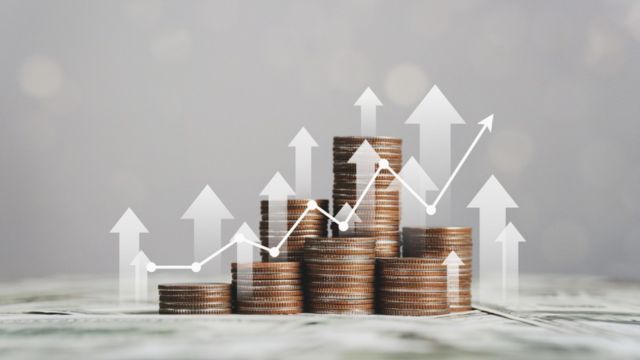An economic phenomena affecting general economic stability, investment returns, and buying power is inflation. Investors now depend on knowledge of inflation rates globally since global markets are getting more linked. This paper investigates how different investment assets are affected by world inflation rates and offers techniques to reduce risks associated to inflation.
What is Inflation?
Inflation is the rise in the general cost of goods and services across a given period. It lowers the value of money, hence each unit of currency purchases less goods and services as prices rise. Usually striving for moderate, under control inflation rates, central banks and governments closely monitor inflation to preserve economic stability.
Global inflation rates are affected by factors such as:
- Supply chain disruptions
- Energy prices (e.g., oil and gas)
- Currency fluctuations
- Government policies
- Geopolitical events (e.g., conflicts, trade wars)
In recent years, global inflation has surged due to factors like the COVID-19 pandemic, supply chain disruptions, and geopolitical tensions in regions such as Eastern Europe.
Impact of Inflation on Different Asset Classes

Inflation affects various investment assets differently. Here’s how:
1. Stocks:
- Positive Impact: Companies with strong pricing power can pass higher costs to consumers, maintaining or even increasing profit margins. Sectors like consumer staples and utilities are often more resilient.
- Negative Impact: Higher inflation can increase operational costs, squeezing profit margins for companies unable to pass on costs. This can lead to decreased earnings and lower stock prices.
- Growth vs. Value Stocks: Growth stocks, which rely on future earnings, may suffer more during periods of high inflation. In contrast, value stocks, which provide stable dividends, tend to perform better as they offer consistent income.
2. Bonds:
- Inflation Risk: Fixed-income investments like government and corporate bonds typically suffer during inflationary periods. When inflation rises, the real value of interest payments decreases.
- Inflation-Protected Bonds: Investments like Treasury Inflation-Protected Securities (TIPS) in the US or Inflation-Linked Bonds in other countries adjust payouts based on inflation rates, offering a hedge against inflation risk.
3. Real Estate:
- Positive Impact: Real estate often acts as a hedge against inflation. Property values and rental income tend to increase in line with or even exceed inflation rates.
- Commercial vs. Residential: Commercial real estate can be more profitable during inflationary periods, especially in sectors with long-term lease agreements that allow for periodic rent adjustments.
4. Commodities:
- Inflation Hedge: Commodities like gold, silver, and oil generally perform well during inflationary periods. As currency values drop, tangible assets retain intrinsic value.
- Risks: However, commodity prices can be volatile, driven by geopolitical tensions, weather conditions, and speculative trading.
5. Cryptocurrencies:
- Emerging Asset Class: Cryptocurrencies like Bitcoin are often viewed as digital gold, offering a potential hedge against inflation.
- Volatility: Despite their appeal, cryptocurrencies are highly speculative and can experience extreme price swings, making them a high-risk inflation hedge.
Global Inflation Trends in 2025
In 2025, global inflation rates remain elevated in several major economies:
- United States: Inflation is projected to moderate but still remains above pre-pandemic levels due to persistent wage pressures and housing costs.
- European Union: The EU continues to face high inflation driven by energy prices and supply chain disruptions.
- China: China’s inflation remains relatively controlled, but currency fluctuations and trade uncertainties pose risks.
- Emerging Markets: Countries like Brazil, Turkey, and Argentina experience significantly higher inflation due to political instability and currency depreciation.
Monitoring these regional inflation trends is crucial for investors, as varying rates can create opportunities for diversification and risk mitigation.
Strategies to Protect Investments from Inflation
To safeguard investments against the adverse effects of inflation, consider these strategies:
- Diversify Across Asset Classes:
- Include a mix of stocks, bonds, real estate, and commodities to balance risk and reward.
- Invest in Inflation-Linked Securities:
- Consider assets like TIPS or other inflation-protected bonds to maintain purchasing power.
- Focus on Dividend-Paying Stocks:
- Companies with consistent dividends can provide regular income, offsetting inflationary losses.
- Invest in Real Estate and REITs:
- Real estate assets can provide cash flow and capital appreciation, particularly during inflationary periods.
- Hold Precious Metals:
- Gold and silver can serve as a store of value when fiat currency loses purchasing power.
- Consider International Investments:
- Diversify geographically to mitigate the impact of domestic inflation on portfolio returns.
Conclusion
A necessary feature of economic cycles, inflation can have a major effect on investments. Understanding how different asset classes react to increasing prices and using strategic asset allocation will help investors to properly safeguard and increase their wealth in front of world inflationary pressures.
Maintaining financial resilience in an erratic economic environment can be improved even more by keeping aware of regional inflation trends and modifying investment plans.
Discover the latest government schemes, financial programs, and global welfare initiatives on DigitalIndiaMIB.com. Stay updated with accurate, comprehensive information that helps you make informed decisions. Visit us today and unlock opportunities for growth and financial security!













